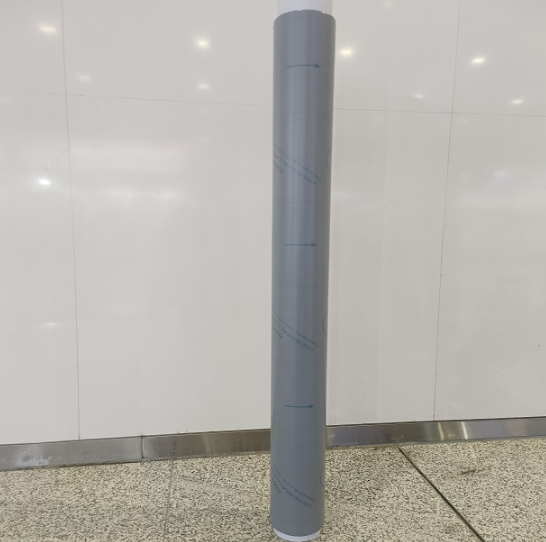Nov. 13, 2025
Manufacturers across automotive, electronics, medical device, and industrial equipment sectors are increasingly embracing high-performance laser protection films to safeguard their production lines from costly surface defects. As laser marking, cutting, and welding processes become more prevalent, the demand for reliable protective films that prevent scratches, burns, and debris-induced damage has surged. Beyond simple protection, these films have proven to significantly reduce rework costs—by as much as 30% in some factories—while improving overall production efficiency.
This article explores the technology, benefits, and practical applications of high-performance laser protection films, providing a detailed analysis of how they help factories achieve measurable cost savings.

Laser-based manufacturing processes, including laser cutting, engraving, marking, and welding, expose substrates to several potential hazards:
Thermal damage: High-intensity laser beams can burn, discolor, or deform sensitive surfaces.
Particulate contamination: Metal vapor, smoke, and molten debris can settle on nearby surfaces, causing adhesion or cosmetic issues.
Mechanical abrasion: During handling, fixtures, or robotic manipulation, laser-induced heat can make surfaces more susceptible to scratches.
Even minor defects can trigger costly rework cycles, slowing production, increasing material waste, and affecting customer satisfaction.
Laser protection films act as a sacrificial layer, absorbing mechanical and thermal stresses while preserving the integrity of the underlying substrate. Key features include:
High laser resistance: Able to withstand focused laser energy without decomposition.
Thermal stability: Protects against discoloration and heat-induced deformation during marking or welding.
Chemical resistance: Endures cleaning agents, adhesives, or flux residues used in production.
Mechanical durability: Resists scratches, abrasions, and minor impacts during handling and assembly.
Modern films are engineered for compatibility with metals, plastics, glass, and coated surfaces, providing versatile protection across multiple industrial processes.
High-performance laser protection films typically combine the following:
Multi-layer polymeric structures: Each layer serves a specific function—heat dissipation, abrasion resistance, or surface adhesion.
High-performance adhesives: Designed to stick securely during processing but peel cleanly without leaving residues.
Laser-absorbing additives: Disperse and dissipate laser energy to prevent substrate damage.
Enhanced mechanical reinforcement: Improves tear strength and resistance to punctures during high-speed manufacturing.
Recent technological advancements have resulted in films that are thinner, stronger, and more thermally stable, enabling use on complex geometries and delicate surfaces without compromising protection.
The integration of high-performance laser protection films delivers measurable cost reductions in several ways:
By shielding substrates from laser-induced heat and debris, factories experience fewer scratches, burns, or contamination spots, drastically reducing the need for manual touch-ups or repainting.
Defective parts that would otherwise be scrapped are protected, lowering material loss and improving yield rates. Manufacturers report reduction in scrap rates of 20–25% after adopting protective films.
Rework often requires skilled labor for surface finishing, polishing, or corrective painting. Protective films reduce labor hours spent on rework, freeing technicians for higher-value tasks.
With fewer defective parts, production lines run smoother, lead times shorten, and order fulfillment becomes more predictable. Some factories report 30% faster turnaround for laser-marked components after deploying high-performance protective films.
In a mid-sized automotive component factory using laser marking for metal housings:
Problem: Frequent surface discoloration and minor scratches on powder-coated metal parts.
Solution: Applied high-performance laser protection film compatible with powder coating and adhesive removal processes.
Outcome:
Rework costs dropped by 30%.
Material scrap reduced by 15%.
Line throughput increased due to fewer production interruptions.
This example demonstrates that protective films are not just cosmetic solutions—they are strategic tools for operational efficiency and cost control.
High-performance laser protection films are widely used in sectors where precision and surface quality are critical:
Automotive: Metal body panels, interior trims, painted surfaces.
Electronics: Housings, screens, circuit board overlays.
Medical Devices: Surgical tools, implants, diagnostic equipment surfaces.
Consumer Appliances: Stainless steel panels, glass surfaces, plastics.
Industrial Equipment: Metal enclosures, machined parts, protective coatings.
The versatility of these films ensures they can be tailored for specific laser processes and substrate types, maximizing protection while minimizing interference with manufacturing operations.
To maximize effectiveness and ROI, factories should consider:
Proper film selection: Choose thickness, adhesive strength, and thermal resistance according to substrate and laser type.
Optimized application: Ensure uniform coverage, no trapped air bubbles, and secure edges to prevent lifting during laser operations.
Controlled removal: Peeling techniques should prevent residue and preserve surface integrity.
Training operators: Staff should understand correct handling, application, and removal to prevent errors.
When correctly implemented, these practices ensure that protective films deliver consistent results and sustainable cost savings.
Beyond cost savings, high-performance laser protection films provide additional benefits:
Reduced chemical use: Fewer polishing agents or corrective coatings are needed.
Lower energy consumption: Reduced rework minimizes secondary heating, curing, or drying operations.
Workplace safety: Less handling of defective parts and chemicals improves operator safety.
Sustainability: Extended substrate lifespan and lower scrap rates contribute to greener manufacturing practices.
Technological innovation continues to enhance the performance and efficiency of laser protection films:
Ultra-thin, high-strength films: Reducing material usage without compromising durability.
Multi-functional coatings: Combining anti-static, anti-reflective, and laser-protective properties in one film.
Recyclable or biodegradable substrates: Supporting environmental initiatives.
AI-assisted process integration: Predicting optimal placement and peel-off timing to maximize protection and minimize waste.
These developments indicate that protective films will remain a critical cost-control tool as laser processes become more widespread and sophisticated.
High-performance laser protection films have transformed how modern factories protect delicate surfaces during laser processing. By effectively preventing scratches, burns, and contamination, these films directly reduce rework costs by up to 30%, improve throughput, and enhance overall manufacturing quality. Their versatility across materials and laser applications makes them an indispensable component of efficient and sustainable production workflows.
For manufacturers looking to optimize production efficiency and safeguard surface integrity, choosing reliable laser protection films from trusted suppliers like NB Technology ensures consistent performance, measurable cost savings, and a competitive advantage in today’s high-precision industrial landscape.
Previous: None
Next: How to Select a Reliable Laser Protection Film Supplier: Key Checklist Items
Navigation
+86 158 1691 5404
+86 757 8271 3937
+86 757 8271 3937
No. 10 Industry Huacongsiyue Village, Shishan Town, Nanhai District, Foshan, Guangdong Province, China